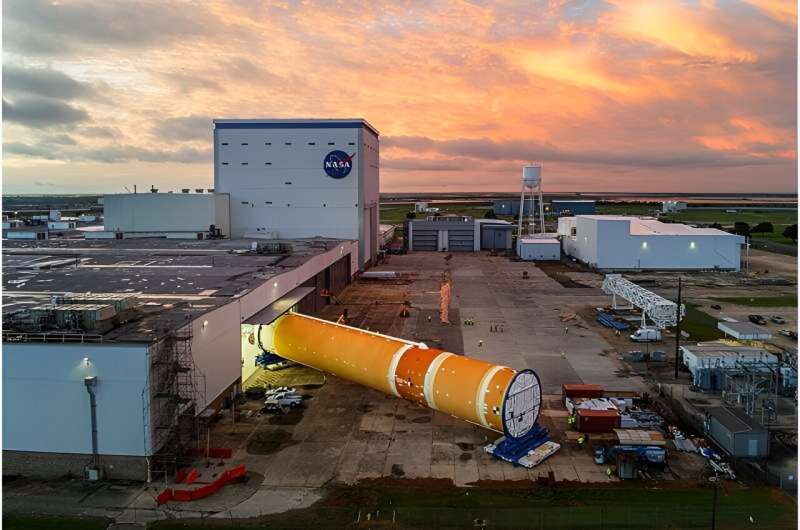The last time humans flew to the moon was on Apollo 17 in 1972.
"With Artemis, we've set our sights on doing something big and incredibly complex that will inspire a new generation, advance our scientific endeavors, and move U.S. competitiveness forward," said NASA's Catherine Koerner, associate administrator for the Exploration Systems Development Mission Directorate. "The SLS rocket is a key component of our efforts to develop a long-term presence at the moon."
The rocket's lone flight in November 2022 on the Artemis I mission made it the most powerful rocket ever to make it to orbit before this year's successful SpaceX Starship and Super Heavy missions, which produce nearly twice the thrust on liftoff.
SLS is still touted by NASA, though, as the only rocket that can send both crew and cargo on its planned lunar missions that include the construction of a lunar space station called Gateway and regular missions on the moon's south pole in search of ice that could be converted to fuel and oxygen for a potential lunar habitat.
The uncrewed version of Orion that flew on Artemis I made it back to Earth safely on what was considered a mostly successful test flight, but damage to Orion's heat shield remains the lead problem to solve before NASA is willing to put humans on board.
The road map still calls for Artemis III to fly one year later no earlier than September 2026, a flight that is designed to send Orion back to the moon where it will rendezvous with a lunar lander version of SpaceX's Starship. Two of the four astronauts on Artemis III will board Starship to fly down to the lunar surface. One of those astronauts is slated to be the first woman to walk on the moon.
The Artemis program was born in 2012 out of the remnants of the shuttered Constellation program, which also featured the Orion spacecraft. The first flight came years later than expected at much higher costs.
An audit in late 2023 from NASA's Office of the Inspector General stated that through the first three missions, the program will have topped $93 billion. The SLS rocket represented 26% of that cost to the tune of $23.8 billion.
The audit stated SLS rockets will top $2.5 billion per launch, although NASA was aiming to reduce costs through "workforce reductions, manufacturing and contracting efficiencies, and expanding the SLS's user base" to only $1.25 billion per launch. The OIG deemed that aspirational goal unrealistic, though.
It did find that rocket costs could approach $2 billion through the first 10 SLS rockets under a new contract structure implemented in 2023, which would be a cost reduction of 20%.
NASA's goal for the Artemis program, set during the Obama administration, is still to land a human on Mars by 2040.
"The delivery of the SLS core stage for Artemis II to Kennedy Space Center signals a shift from manufacturing to launch readiness as teams continue to make progress on hardware for all major elements for future SLS rockets," said NASA SLS program manager John Honeycutt. "We are motivated by the success of Artemis I and focused on working toward the first crewed flight under Artemis."
2024 Orlando Sentinel. Distributed by Tribune Content Agency, LLC.



